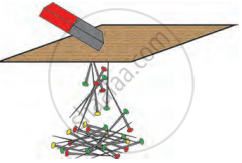Topics
The Living World: Adaptations and Classification
- Biodiversity
- Adaptations and Its Types
- Adaptations of Plants
- Adaptation in Aquatic Plants (Hydrophytes)
- Adaptation in Desert Plants (Xerophytes)
- Adaptation in plants of snowy regions
- Adaptation in Forest Plants
- Adaptation in Grassland Plants (Mesophytes)
- Adaptation for Ingestion of Food in Plants
- Adaptation in Animals
- Adaptation in Aquatic Animals
- Adaptation in Forest and Grassland Animals
- Adaptation in Desert Animals
- Adaptation in animals of snowy regions
- Adaptation in Aerial Animals
- Adaptation in Reptiles
- Adaptation for Food in Animals
- Adaptation for Blending with the Surroundings
- Classification of Living Organisms
- Taxonomic Hierarchy of Living Organisms: Unit of Classification
- Nomenclature
Plants: Structure and Function
Properties of Natural Resources
Nutrition in Living Organisms
- Nutrients and Nutrition
- Autotrophic Plants
- Symbiotic Plants
- Heterotrophic Plants
- Insectivorous Plants
- Saprophytic Plants
- Role of nutrients and effects of their deficiency on plants
- Transport System in Plants
- Nitrogen Fixation
- Nutrition in Animals
- Mode of Nutrition in Animals
- Holozoic Nutrition
- Saprozoic Nutrition
- Parasitic Nutrition
Food Safety
Measurement of Physical Quantities
Motion, Force and Work
Static Electricity
Heat
Disaster Management
Cell Structure and Micro-organisms
- Cell: Structural and Functional Unit of Life
- Measurement and observation of cells
- Plant Cell and Animal Cell
- Structure of the Cell
- Cell Wall - “Supporter and Protector”
- Plasma Membrane
- Cytoplasm - “Area of Movement”
- Nucleus - “Brain” of the Cell
- Endoplasmic Reticulum (ER)
- Golgi Apparatus - "The delivery system of the cell"
- Lysosome - “Suicidal Bag”
- Mitochondria - “Power House of the Cell”
- Non-living Substances Or Cell Inclusion
- Plastids
- Microorganisms (Microbes) and Microbiology
- Useful micro-organisms
- Harmful Microorganisms
- Pathogens: Disease-producing Micro-organisms
The Muscular System and Digestive System in Human Beings
- Muscular System
- Muscles and Its Types
- Human Digestive System
- The Mouth and Buccal Cavity
- The Teeth and Its Structure
- The Salivary Glands
- The Food Pipe/Oesophagus
- Pharynx/Throat
- The Stomach
- The Small Intestine
- Pancreas
- Liver
- The Large Intestine
- Important Glands of the Digestive System
- Effects of Tobacco, Alcohol, Smoking, on the Digestive System
Changes – Physical and Chemical
- Changes-Physical and Chemical
- Classification of Change: Natural and Man-made Changes
- Classification of Change: Harmful and Useful Changes
- Classification of Change: Slow and Fast Changes
- Classification of Change: Reversible and Irreversible Changes
- Classification of Change: Periodic and Non-periodic Changes
- Classification of Change: Physical Changes
- Classification of Change: Chemical Changes
- Corrosion of Metals
Elements, Compounds and Mixtures
Materials We Use
Natural Resources
Effects of Light
Sound: Production of Sound
Properties of a Magnetic Field
In the World of Stars
- Experiment 1
- Experiment 2
- Experiment 3
Experiment 1
1. Aim: To observe if a magnetic field can pass through cardboard.
2. Requirements: bar magnet, pins, and cardboard.
3. Procedure
- Spread pins on a table.
- Hold a cardboard a short distance above the pins.
- Place a bar magnet on the cardboard and observe the pins.
- Slowly move the magnet over the cardboard and observe the movement of the pins.
- Add more layers of cardboard and repeat the process.

Penetrating ability of magnetic field
4. Conclusion: The magnetic field can pass through cardboard and attract the pins. However, as more cardboard layers are added, the magnetic field's strength decreases.
Experiment 2
1. Aim: To observe the behaviour of a magnetic field through water and plastic.
2. Requirements: plastic bottle, water, pins, and bar magnet.
3. Procedure
- Fill a plastic bottle with water and drop some pins inside it.
- Bring a bar magnet near the bottle and observe if the pins move.
- Move the magnet slowly along the surface of the bottle and observe the pins.
4. Conclusion: The magnetic field passes through water and plastic to attract the pins. However, the intensity of the magnetic field decreases when passing through the bottle and water.
Experiment 3
1. Aim: To observe the interaction of a magnetized needle with a floating magnet.
2. Requirements: water basin, bar magnet, plastic lid, needle or pin, small piece of thick cardboard, sticking tape.
3. Procedure
- Fill a basin with water and place a bar magnet on a plastic lid, floating it on the water’s surface.
- Magnetize a needle and stick it firmly to a small piece of cardboard using tape.
- Place the needle stuck to the cardboard in the water, close to the floating magnet, and observe its movement.
- Repeat the experiment by placing the needle at different places around the floating magnet and note the direction in which the needle moves.
4. Conclusion: The needle aligns with the magnetic field and points in the direction of the magnet's field. This shows that the magnetic field influences objects on the surface of water and changes the needle's direction based on the magnet’s position.
